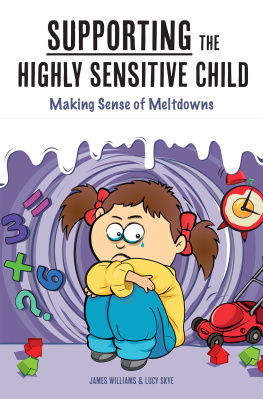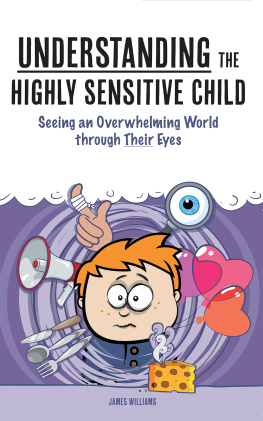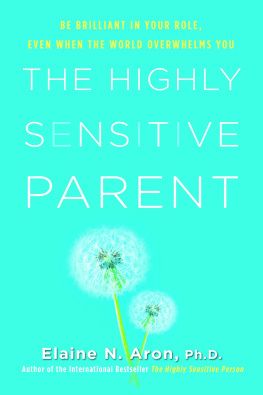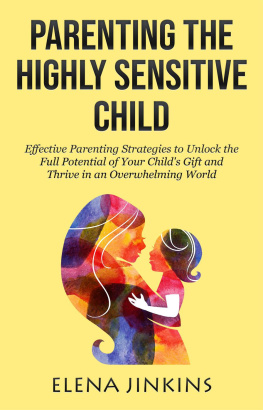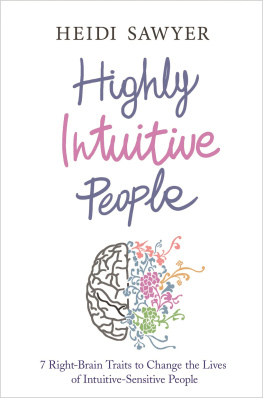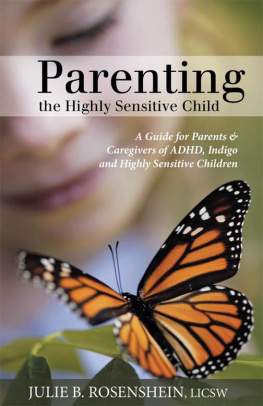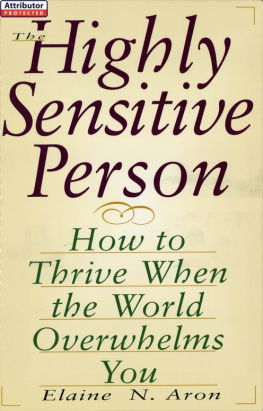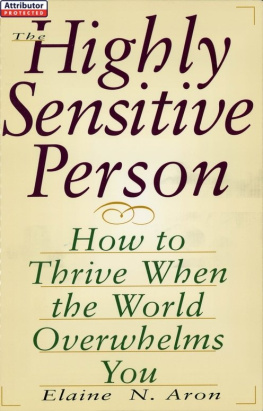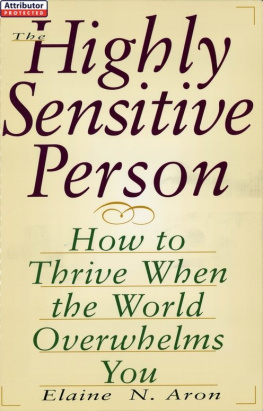Making it happen
Managing meltdowns takes time, it wont happen overnight and you will make plenty of mistakes along the way. Gradually build your capacity for compassion and understanding towards yourself and your child, and your knowledge and strength in understanding and managing meltdowns will only increase. You will feel more in control, and your child will have a strong source of support to help them thrive.
Believe in yourself, and believe in your child.
Keep up with our latest news, books and thinking here:
https://www.facebook.com/myhighlysensitivechild
https://twitter.com/FamilyFeelings
http://familyfeelings.today
Supporting the
Highly Sensitive Child
Making Sense of Meltdowns
James Williams
and
Lucy Skye
James Williams and Lucy Skye
First Published 2017
All rights reserved. No part of this book may be reproduced, adapted, stored in a retrieval system or transmitted by any means, electronic, mechanical, photocopying, or otherwise without the prior written permission of the author.
The rights of James Williams and Lucy Skye to be identified as the author of this work have been asserted in accordance with the Copyright, Designs and Patents Act 1988.
A CIP catalogue record for this book is available from the British Library.
ISBN: 978-15078800-2-9
Book formatting by www.ebooksbydesign.co
Contents
Foreword by Lisa Nel, Childrens Therapist MBACP (Accred)
Compassionate, guilt-reducing, informative and well-illustrated, this concise guide offers insight and practical support for any parent or professional ever faced with a child in meltdown i.e. most parents and childrens professionals!
Though written with specific reference to the highly sensitive child, as I read, many of the vulnerable children and young people with whom Ive worked as a therapist kept popping into mind. While the reason a highly sensitive child is likely to reach meltdown quicker and more frequently than most children is due to their higher base level of anxiety and sensitivities, safely supporting meltdowns can challenge us all at some time. Feeling discomfort about change or future uncertainty and being easily triggered, are true of anyone with low emotional resilience, making this a fantastic and widely applicable resource. It is also notably of specific use for anyone who parents, teaches or supports a child on the autistic spectrum.
When a child experiences strong, uncontainable emotion, our responsibility as parents or professionals is to recognise and be a safe container for their feelings. This both helps the child deal with the current moment as well as to gradually learn how to independently regulate, and understand the purpose of, feelings. As James and Lucy highlight, this doesnt mean having to always drop everything to be there immediately, but being specific about when we can. Keeping our word is a reminder of how trust is a vital cornerstone of all relationships.
Safely supporting meltdowns takes its toll on us too and a key strength to this guide is the emphasis and ideas on compassionate self-care.
A good thing should always be shared! I hope that you will find this wonderful little book as helpful as I have and will pass it on to other parents and colleagues alike.
Lisa Nel
Childrens therapist and founder of Im OK, Youre OK Social Enterprise (www.imokyoureok.co.uk)
Introduction
Welcome to this short guide to making sense of meltdowns for the highly sensitive child. This book will give you a brief overview of meltdowns, how and why they occur, and how you can support them. This will help you to better understand yourself and highly sensitive children.
In each chapter you will find story scenarios (written in italics). These are based on our and others experiences, and you may be able to relate to some or many of them.
Parts of this book may feel hard to read at times. Dont be critical of yourself if you need to go through and process it over several sittings; meltdowns can be an emotive subject.
If you want more information about understanding highly sensitive children in general, you might want to start by reading the first book in this series, Understanding the Highly Sensitive Child.
A little about us
James:
I am privileged to be the primary carer for my two daughters and have been for over ten years. I feel passionately about the role of being a parent and truly believe its the best job in the world. I am also acutely aware of how incredibly difficult and challenging it can be at times.
High sensitivity has a massive impact on my familys life, and coming to understand it has transformed our lives for the better. Before we understood high sensitivity we were bumbling about in the dark; now were in the light. I wish the entire world knew all about high sensitivity. What a wonderful world it would be if highly sensitive children and people were understood, accepted and truly valued for who they are.
All I can do is keep spreading the word, and hope that eventually everyone connected with children teachers, health and medical professionals, care workers, parents etc. recognise without judgement, value and nurture highly sensitive children.
During my Daddy years I have developed mindfulness practices through art, meditation and as a way of being. More recently I have started to train to be an Integrative Counsellor.
Lucy:
I have spent fifteen years supporting and working with children and families with different disabilities and needs. For the last six I have worked for a national autism charity and am hugely enthusiastic about improving awareness of hidden needs such as anxiety, sensory sensitivities and social communication, and supporting good mental health. I try to raise understanding of the impact of these needs on the wider family, particularly on siblings.
I am the author of a fiction book for children, The Adventure of Maisie Voyager. This won the Gold Medal at the Moonbeam Book Awards in 2012, and features a quirky protagonist with a range of high sensitivities, none of which stop her from getting fully involved in an exciting mystery. In most of my spare time I can be found either writing or running. Rarely both at once though.
I strongly identify as a highly sensitive person. Having this understanding has enabled me to improve my relationships and interactions with the world. This insight is continually growing and I believe that it is a path of life-long learning, and one I am happy to be on! Like James, I have recently started to train to be an Integrative Counsellor and look forward to embedding this into my life and work.
Chapter 1: Meltdowns and highly sensitive children
Can you remind me what being highly sensitive means?
A highly sensitive child has a very sensitive nervous system, which can lead to:
- Keen awareness noticing many tiny details and subtleties in their environment
- Intense experiencing feeling emotions and sensations very deeply and strongly
- Overload being overwhelmed by the intensity of feelings and awareness
Overload may lead children to withdraw into themselves, to run away, or to react with frustration, fear or sadness. This point of overload is what we call a meltdown.
What is a meltdown?
Imagine a pot of metal shavings heating up in a forge. Each individual curl of iron gradually loses its shape and colour, eventually becoming an oozing blob of liquid.
Everything that was once solid has now lost its form and cannot hold its own shape any more.
Imagine a child bombarded: by requirements and requests from others, by sensory overload, by their own expectations. Every part of their brain is furiously firing away, trying to keep up with the demands. And then there is suddenly one more ask of them, and this becomes the catalyst. All of their thoughts and feelings conflate; they are completely overwhelmed by these emotions that then burst out as fear or rage or sadness or frustration.

